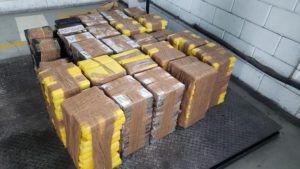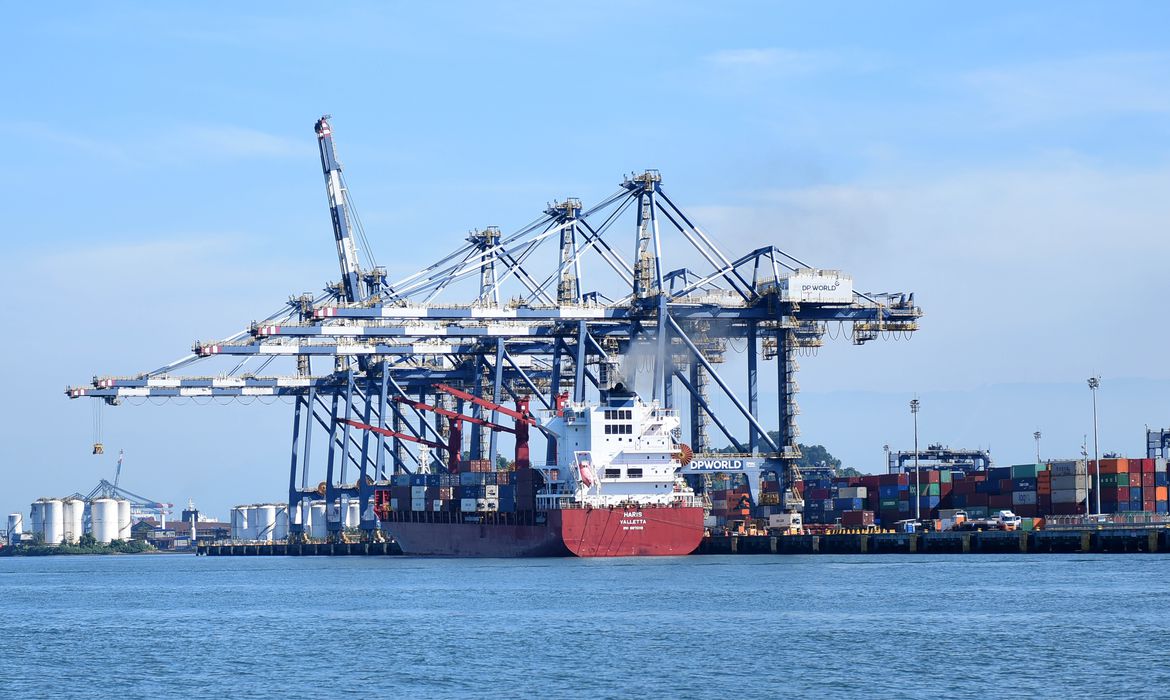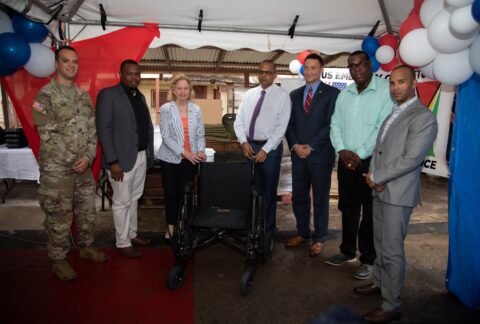Amid packages of coffee beans, the Brazilian Federal Police (PF, in Portuguese) found 558 kilograms of cocaine, February 3, 2022. The cargo was ready to be shipped from the Port of Santos to Germany. Drug seizures in Brazilian ports, especially Santos, located in São Paulo state and the second largest in Latin America after the port of Colón in Panama, are so frequent that a recent report by the international investigative journalism organization InSight Crime called it “a crucial lynchpin for the global cocaine trade.”
Between 2010 and 2019, the PF seized a total of 80.7 tons of cocaine at the Port of Santos. In 2020, during the pandemic, authorities seized 14.1 tons of cocaine. In 2021, operations of the Brazilian Revenue Service (RFB, in Portuguese) led to the seizure of some 15 tons of cocaine at the port, the Brazilian news site G1 reported. According to PF data, about 80 percent of that drug was bound for European countries, the Brazilian magazine Piauí reported.
The port of Santos connects over 600 ports in 125 countries worldwide, its official website says. Several criminal organizations are taking advantage of this network, but the First Capital Command (PCC, in Portuguese), which controls narcotrafficking in São Paulo, is considered one of the most important, InSight Crime says. The gang has extended its drug trafficking tentacles across the region and has control over several major cocaine trafficking routes, bringing drugs produced in Andean countries into Brazil and moving them to export centers, particularly through ports, such as the Port of Santos, the investigative organization added.

In an early 2021 report, Insight Crime indicated that in an attempt to avoid interdiction at traditional hotspots (Colombian or Peruvian ports), criminal organizations migrated to other ports of the region in countries like Brazil and Ecuador. “Brazil’s direct connections with production zones in Colombia, Peru, and Bolivia, on one side, and numerous Atlantic coast container ports, on the other, made it an enticing prospect for traffickers seeking new routes to Europe,” the organization said.
In ports, the means to get narcotics into the ships are varied. “[Criminals] bribe workers who operate in some way in the logistics chain,” said Oswaldo Souza Dias Junior, an RFB tax auditor with the Port of Santos Customs, to the Brazilian news site UOL. These professionals are bribed to place drugs directly into containers or to help it go through the X-ray screening system.
But the PCC also relies on less conventional methods, such as the use of divers. On January 11, 2022, Spanish criminal Joaquín Francisco Giménez, known as the PCC’s Aquaman, was arrested while on his way to place nearly 1 ton of cocaine on a ship in the Port of Santos, G1 reported. The PCC would hire Giménez to dive under the hull of vessels, where he would access a compartment through which he’d insert packages of drugs.
Brazilian ports are also under the influence of international mafia structures. In its report, InSight Crime singles out the Italian gang ‘Ndrangheta as the main partner of the PCC in the Port of Santos. According to the Organized Crime and Corruption Reporting Project, an international investigative journalism organization that specializes in organized crime, the ‘Ndrangheta is one of the most powerful criminal networks in Europe, which buys cocaine in Latin America, and then transport and sell it in Europe. There is also interference from criminals of Serbian and African origin.
Brazil, however, has redoubled efforts to stop drugs from shipping in containers from its ports. In late December 2021, in just three days, the PF dealt a blow to drug traffickers, seizing 2,510 kg of cocaine in the Port of Santos. The drugs were bound for France, Spain, and Ghana.








